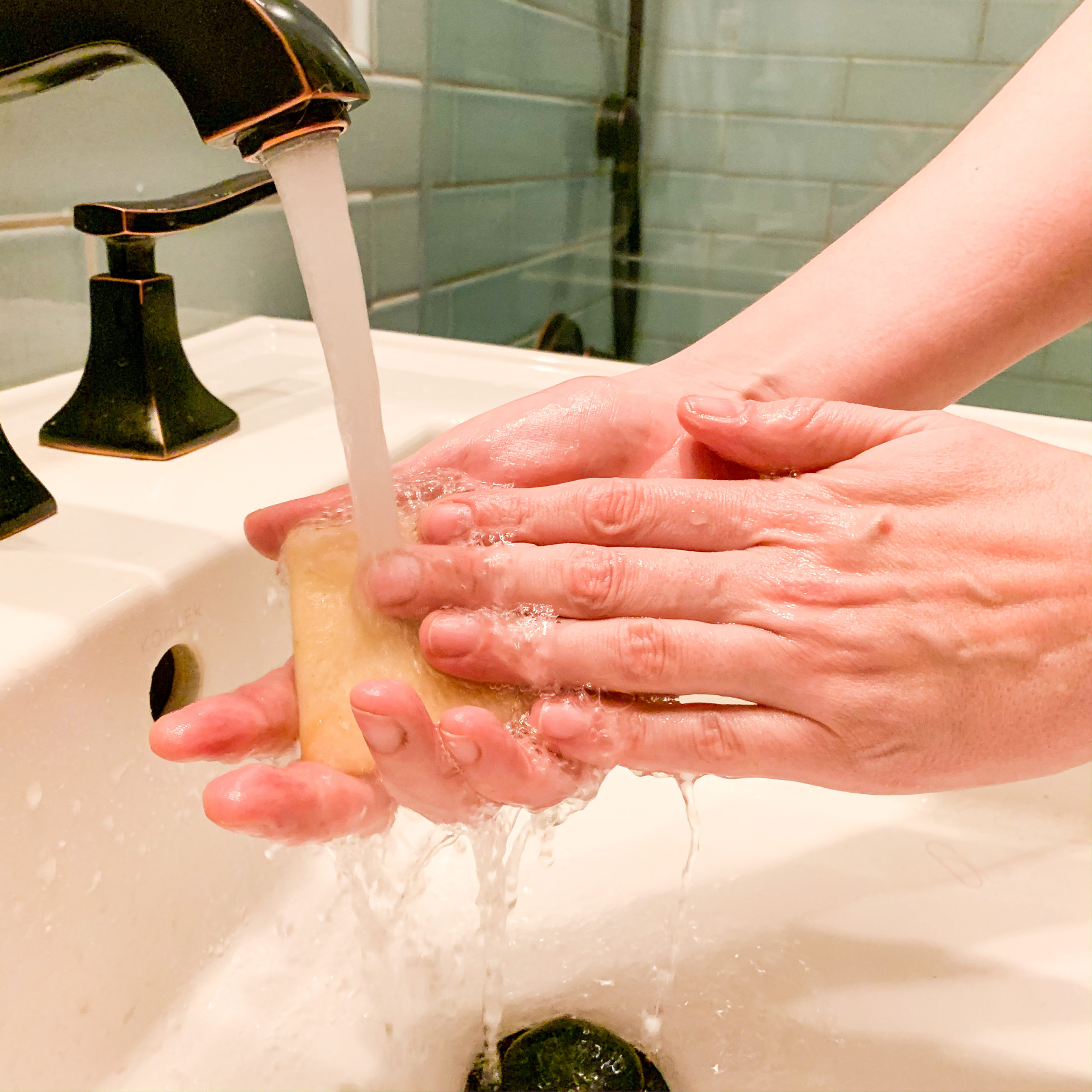The flu is making its rounds and everyone is wondering what they can do to protect themselves.
I want to address an important part of the conversation that tends to get overlooked: handwashing versus hand sanitizer.
These two things seem equivocal in most people’s minds: just do one of them regularly and you’re covered.
This is NOT true.
Recent studies have shown that hand washing is far superior to hand sanitizer in terms of how fast viruses and bugs are killed.
If you’re more of a visual person, check out this awesome experiment by a school teacher comparing hand washing and hand sanitizer with slices of bread.
While hand sanitizer is better than nothing, it isn’t nearly as effective as hand washing.
The alcohol base of hand sanitizers isn’t great at breaking down mucus droplets that contain the flu virus, whereas soap and water is.
The process of hand washing also helps the virus-laden droplets to be removed from your hands and rinsed down a drain, whereas hand sanitizers are simply rubbing things around on your hands.
The worst of the worst, triclosan, is under fire, but it’s still a bit murky where it might be showing up in our personal care and cleaning products.
Triclosan has a variety of adverse effects on humans, including increased asthma, allergies, and food issues, reproductive issues, development defects in infants, and thyroid issues.
I recommend eliminating it from your personal car and cleaning products completely. The FDA partially banned it in 2016, but not fully.
Hint: this stuff is probably still in your toothpaste.
Triclosan went under review and in April of 2019, the FDA issued this statement:
“In today’s final regulation we finalized the FDA’s previous determination that 28 active ingredients, including triclosan and benzethonium chloride, are not eligible for evaluation under the FDA’s OTC Drug Review for use in consumer antiseptic rubs.”
So triclosan is out for hand sanitizer specifically, but not necessarily other products.
The best thing you can do is read labels and avoid products that contain it.
How do you wash your hands appropriately?
Lather soap for 15 seconds (about one chorus of Happy Birthday To You), rubbing both the back and front of your hands. Dry thoroughly, about 20 seconds.
Don’t have soap?
You’re in luck.
Soap is best when you have it, but it’s good to know that simply using water is great prevention as well.
If you’re unable to wash or rinse your hands for a bit, be conscious of not touching your mouth, nose, or eyes until you’re able to do so.
To round out your flu-prevention regimen, focus on rest, hydration, sleep, and stress reduction, and good quality food.
Seriously.
Those core pieces of your health are so much more effective than the new, hot supplement you’ve never heard of until a week ago.
If you’re not taking care of yourself, supplements are a drop in the bucket. They can’t overcome an unhealthy or imbalanced lifestyle.
That being said, if you’re feeling like you want a little extra support, my favorite go-tos are vitamin C, vitamin A, and elderberry.
They are all wonderful at supporting your immune system and elderberry is effective against the flu in early and late stages. It also tastes delicious!
So ditch the hand sanitizer and opt for good ol’ hand washing and you’ll be well on your way to avoiding the yuck.
And please know that if you do get sick, you’re not a bad person. You haven’t failed. You didn’t do something to deserve it.
Getting sick is a normal part of being human and we’re built to deal with it.
Your body is always working to support you and restore health and balance.




